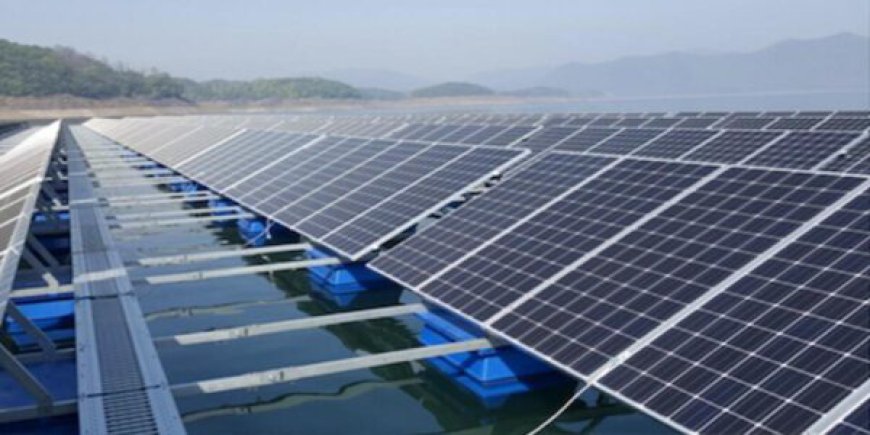Floating Solar Panels : A Growing Solution for Global Renewable Energy
Floating solar photovoltaic (PV) systems, also known as floating solar farms or floating solar panels, are photovoltaic solar power generation systems that float on water bodies such as lakes, irrigation ponds or reservoirs. These systems consist of photovoltaic panels, floating structures, mooring and electrical equipment all combined into a single unit. The basic principle behind floating solar panels is to maximize the usable surface area of existing water bodies for power generation. By installing solar panels on the surface of water, the extra land space needed for conventional ground-mounted systems is minimized.

Floating solar photovoltaic (PV) systems, also known as floating solar farms or floating solar panels, are photovoltaic solar power generation systems that float on water bodies such as lakes, irrigation ponds, or reservoirs. These systems consist of photovoltaic panels, floating structures, mooring, and electrical equipment all combined into a single unit. The basic principle behind floating solar panels is to maximize the usable surface area of existing water bodies for power generation. By installing solar panels on the surface of water, the extra land space needed for conventional ground-mounted systems is minimized.
Current Global Trends in Floating Solar Panels Industry
According to a latest survey, the Asia-Pacific region currently leads the world in floating solar panel capacity additions. China topped the list with over 100 megawatts (MW) of floating solar capacity installed by the end of 2019. Other major countries include Japan, South Korea, India and Vietnam, which are aggressively pursuing this renewable technology. In Europe, the floating solar market is dominated by the Netherlands, which has over 15 operational projects. Meanwhile, growth is also picking up in regions like the Middle East and Africa with new projects under development in countries like Egypt, Kuwait, and South Africa. Some estimates indicate the global floating solar capacity may exceed 5 gigawatts (GW) by 2023 as project costs continue declining and more favorable policies are introduced.
Floating Solar Panel Advantages Compared to Other Renewable Technologies
One of the primary advantages of floating solar panels is increased energy production potential due to the cooling effect of water. Photovoltaic panel performance degrades as temperature increases, but the large proportion of the panels that float on water helps keep temperatures lower than land-based installations. Studies have shown floating solar arrays can achieve 10–25% higher power output compared to those placed on land. Floating systems also utilize the otherwise wasted surface area of water reservoirs, which are often located closer to existing power transmission lines. This eliminates the need for extensive land acquisition and associated transmission infrastructure typically needed for traditional ground-mounted solar farms.
Technical Design Considerations for Floating Solar Panel Systems
There are several technical factors to consider when designing floating solar panel systems:
Floating Structure: The solar panel platform must be able to support the dead load of PV modules along with live loads from wind, waves, and other dynamic water forces. Common designs use pontoons made of polyethylene or fiber-reinforced plastic.
Mooring System: Anchoring methods are required to secure the floating structures and prevent drifting during inclement weather. Deadmen anchors, helical screw anchors, or specially weighted structures are some mooring options.
Electrical Equipment: Junction boxes, inverters, transformers, and cabling need protection from moisture ingress through waterproof enclosures. Connection to land-based infrastructure also requires underwater cables.
Drainage/Ballast Systems: Proper drainage and piping prevents waterlogging of panels. Variable ballast systems help regulate platform buoyancy under changing loads and water levels.
Maintenance Access: Special safety procedures and floating work platforms facilitate equipment cleaning and repairs over the life of the project.
Regulatory and Community Acceptance Issues
While the technical feasibility of floating solar panels is well established, there are still some socio-regulatory challenges slowing broader adoption. Chief among these are unclear or nonexistent legal frameworks for developing such projects. Zoning rules may require amendments to allow industrial activities on water bodies.
About Author:

 pratikcmi
pratikcmi